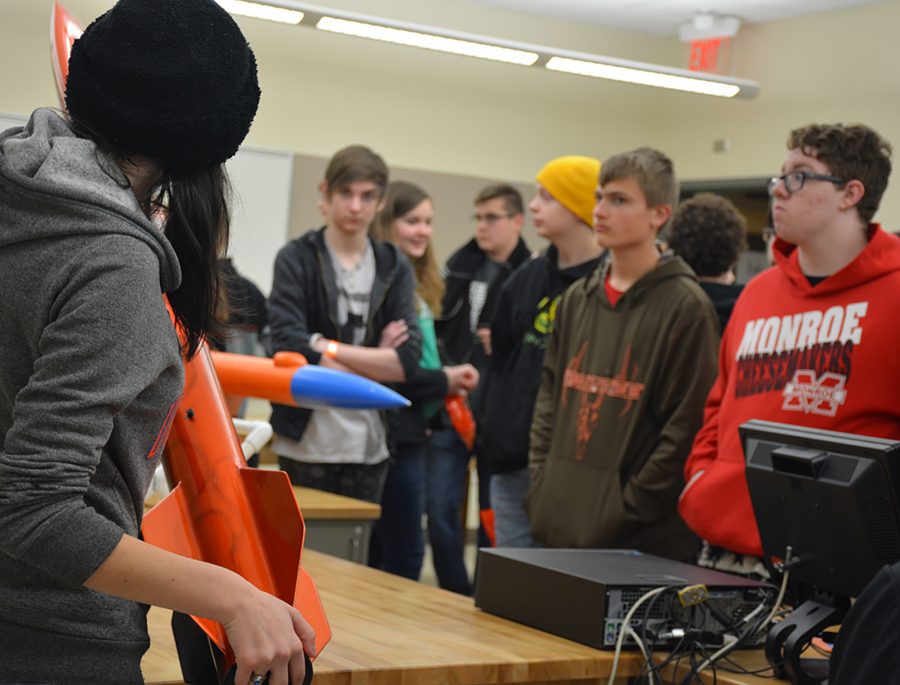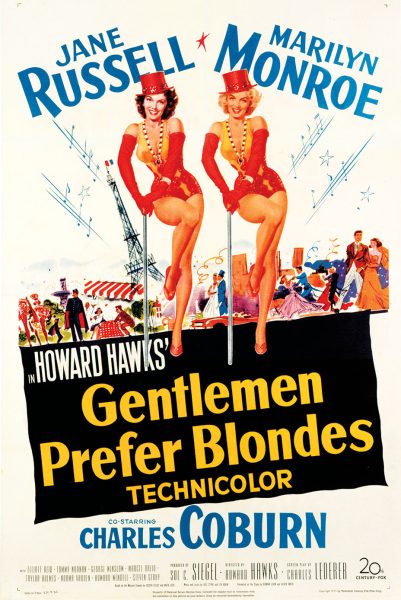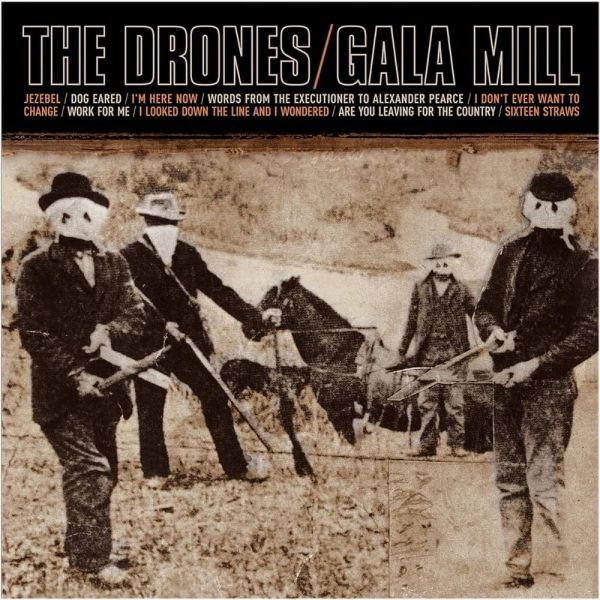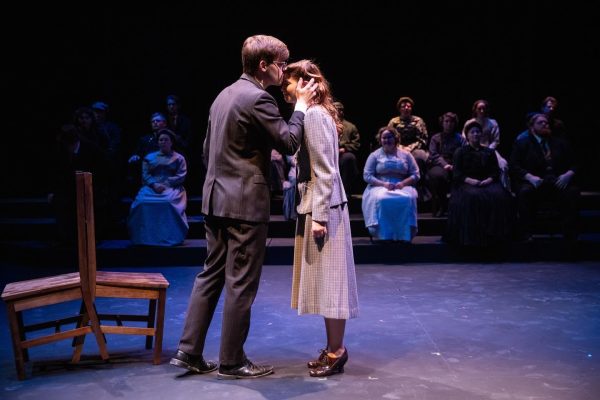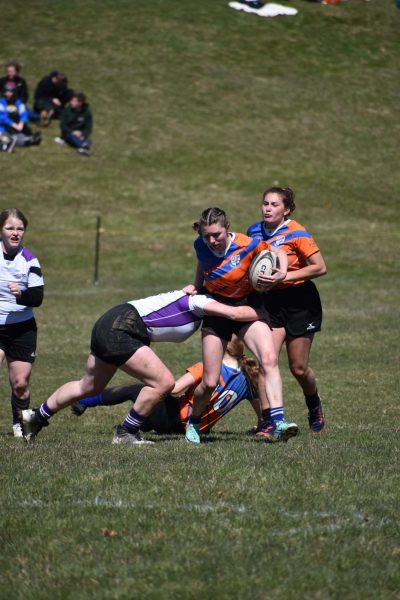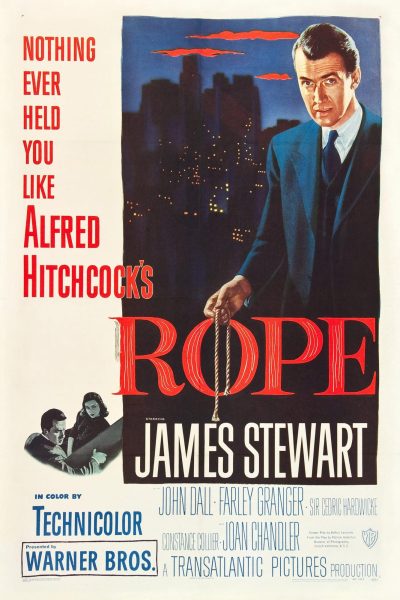Engineering Expo showcases STEM
Physics for the Future is an exhibit which displayed some of the applications of physics presented by Pioneer Rocketry Club.
On April 7, the University of Wisconsin–Platteville hosted its 45th annual Engineering, Mathematics, and Science Expo. The expo was an open house style event where those who attended could experience 45 different exhibits. The exhibits took up classrooms and labs in both Ottensman Hall and Engineering Hall. EMS classes that were in those rooms were cancelled so those students could experience the exhibits and non-EMS classes were held in different buildings.
“The goal of the event is to give younger students the chance to explore and learn more about STEM fields,” Special Programs Manager Jaclyn Esqueda said. This year 1,600 students registered for the expo. This has increased from the 1,400 students registered in 2015 and 1,200 students in 2014.
“It was a great opportunity for my high school students to get a lively campus feel with UW students who were extremely engaged in their fields of study,” high school Special Education teacher Dan Hunt said.
Hunt and his students enjoyed the exhibits in the Engineering Hall and the, “3-D printing, thermal imaging and Jacob’s ladders.” Hunt said he hoped that this experience would inspire his students.
A concrete canoe was one of the projects exhibited at the EMS expo. Civil engineering students Dillon Magadanz, Aaron Passow and Ray Hill helped out with the project. Construction of the canoe started in the fall semester.
The concrete canoe is made out of all the usual parts of concrete, but instead of rock, glass is used.
“Every year we take our mixtures from the previous year and then we try to make a composite concrete mix that improves on certain aspects of the canoe,” civil engineering junior Dillon Magadanz said. The concrete mix isn’t the only aspect that is adjusted. Every few years the design of the hull gets revamped. The length of the canoe is another aspect that can be changed so it tracks better in the water.
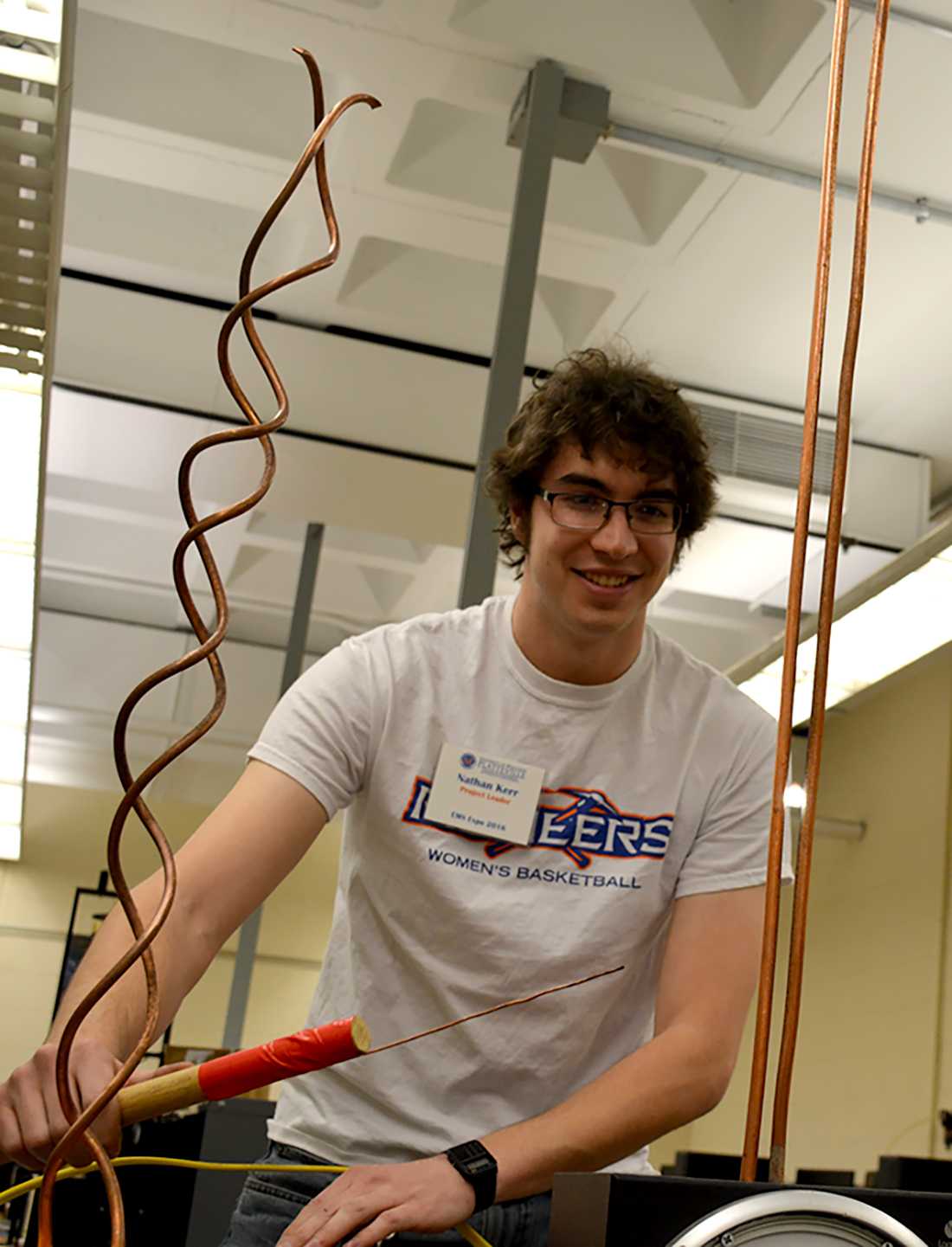
Nathan Kerr helps out at the Engineering Expo, which showed local students all about the STEM field.
The process of creating the canoe starts in the fall when the team gets together.
One of the first steps is coming up with ideas for the canoe, figuring out a theme and the appearance. Once the ideas are refined, they begin building the it. The next step is to build a mold. They start with constructing a Styrofoam mold and then fill it with drywall and wrestling mat tape to act as a release agent. Once the mold is complete, the team gets together on a weekend to place the layers of concrete and mesh on the canoe and level it out. Then the canoe cures over winter break. When the students come back from break, they remove it from the mold. Next they fill in cracks, apply patches and sand as needed. Finally, a coat of sealant is applied and the canoe is done, but the project is not. The group then has to create a cross section of the canoe which is a smaller version to show the entire process. They also have to make a display and write a paper about it. Other than competing in the race, the next step is their professional presentation in front of judges.
Magadanz is currently one of four team captains, each of which is responsible for different parts of the building process. He became involved in the concrete canoe team his freshman year and this is his third year being involved. The students that are involved in the project volunteer their time to create the canoe. They don’t receive class credit for their involvement. Magadanz spends approximately 10 hours a week working on the canoe. Overall, the team spent approximately 1,000 hours working on it from start to finish. Examples of concrete canoes can be found in front of the Karrmann Library and inside Engineering Hall.
UW-Platteville’s concrete canoe team has won the regional competition 10 out of the last 12 years. This year’s regionals will be in Iowa. Next year’s regional competition will be right here in Platteville.




